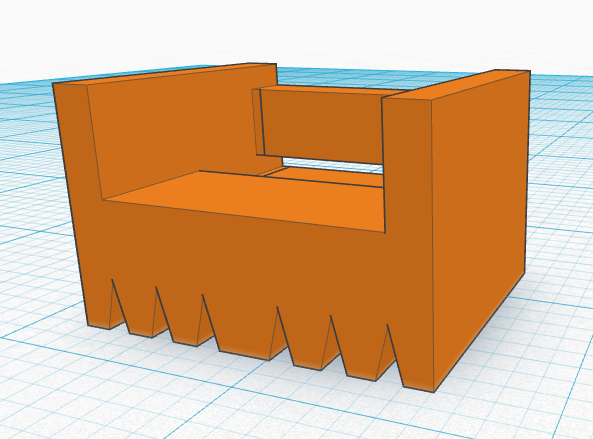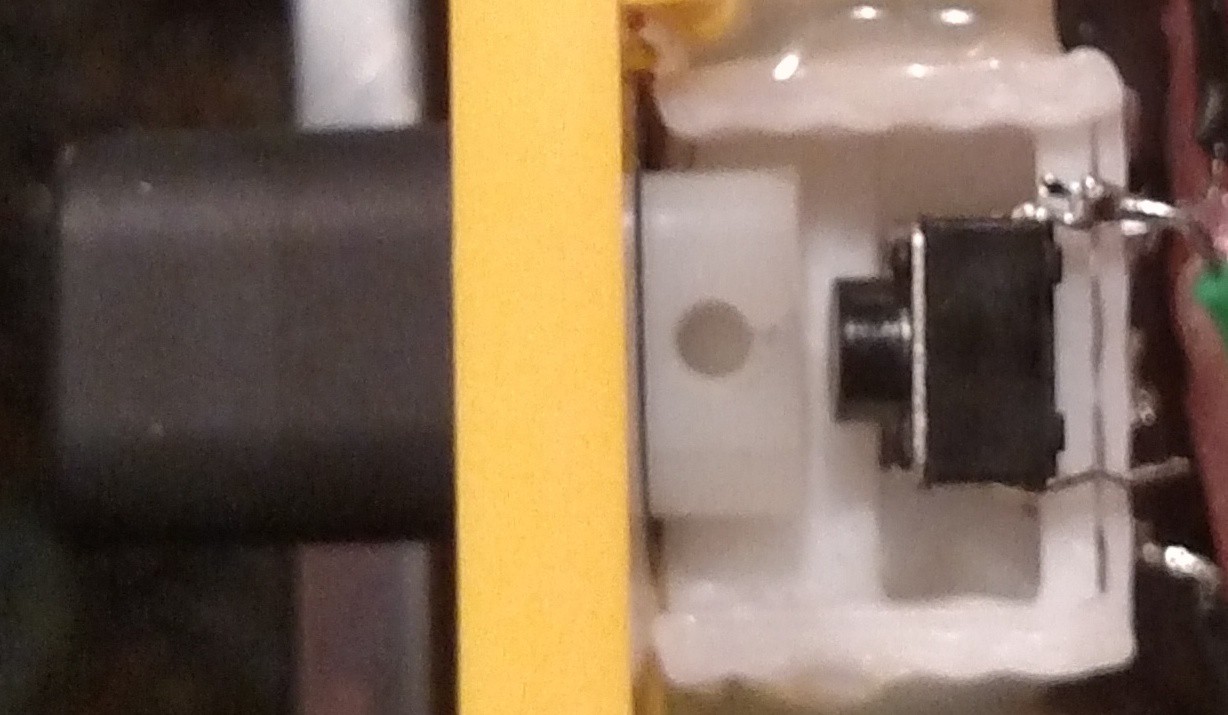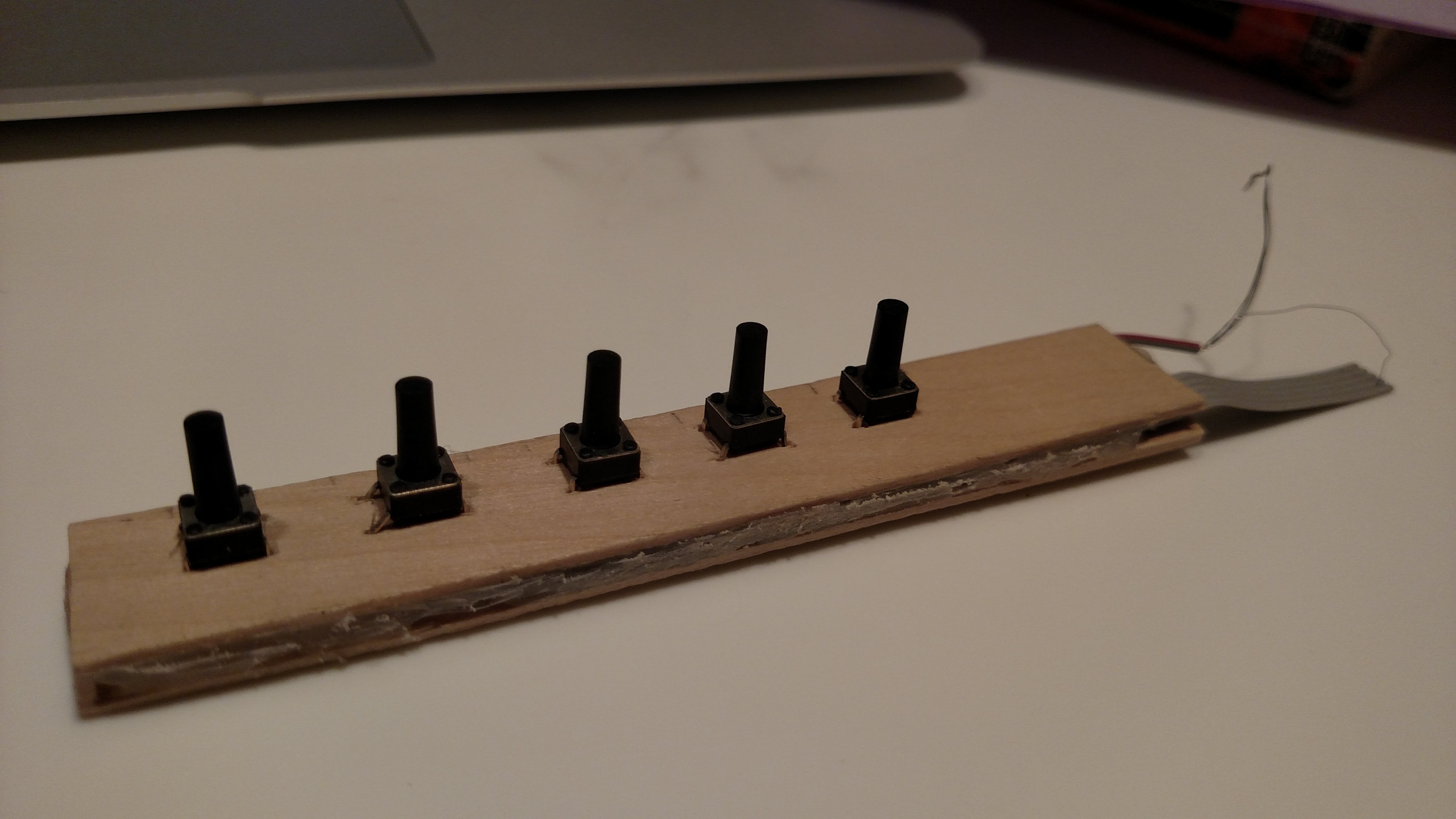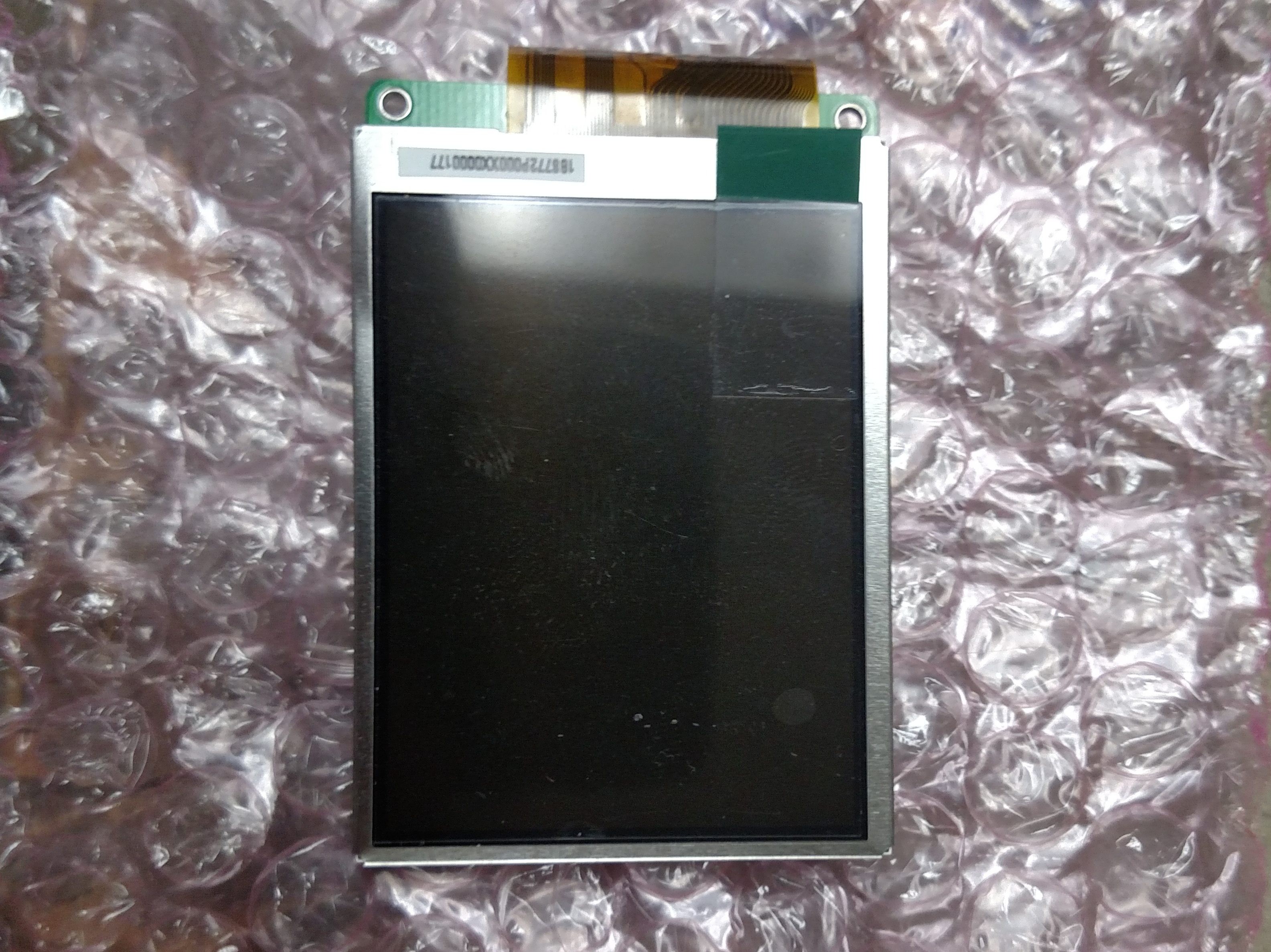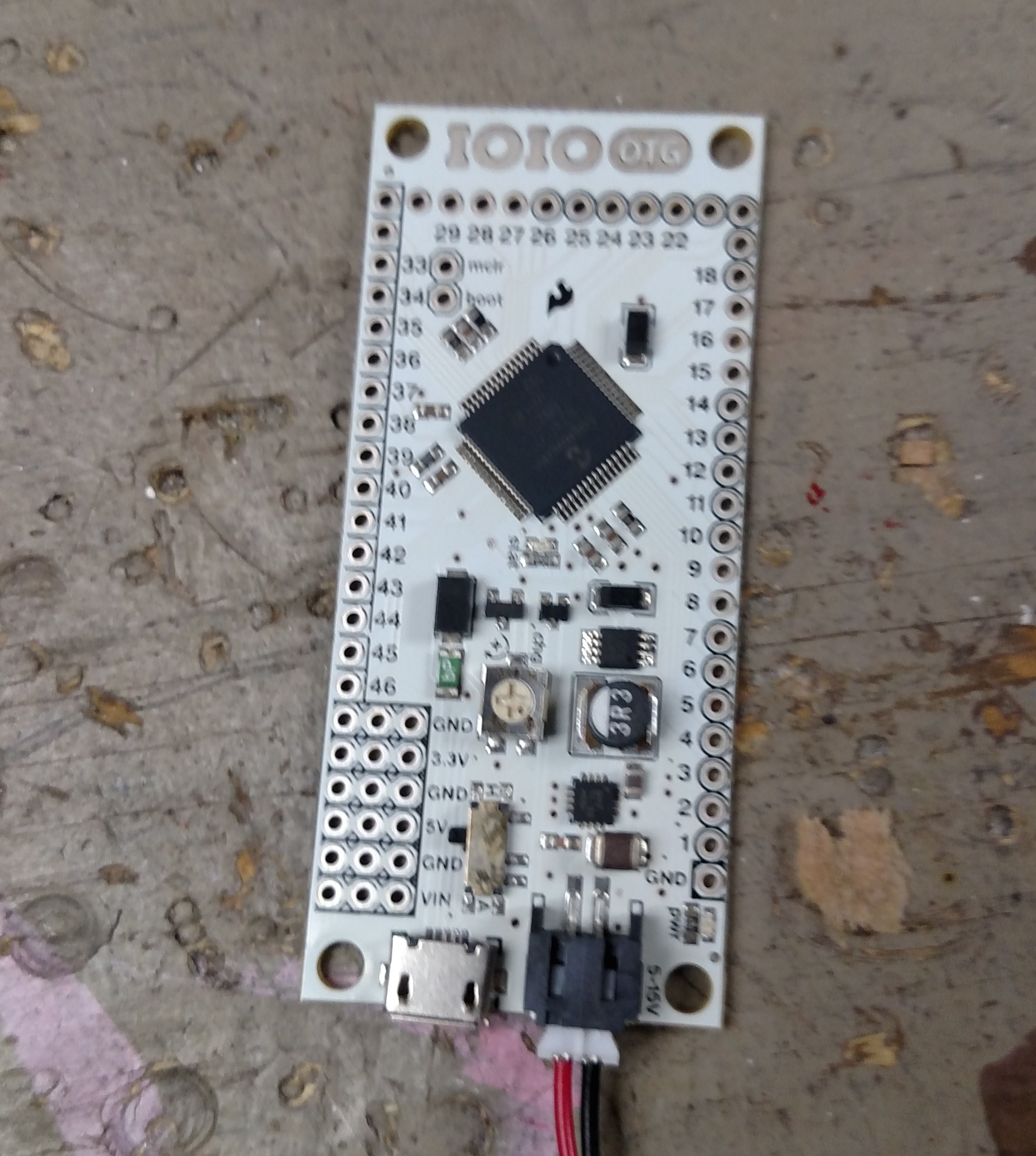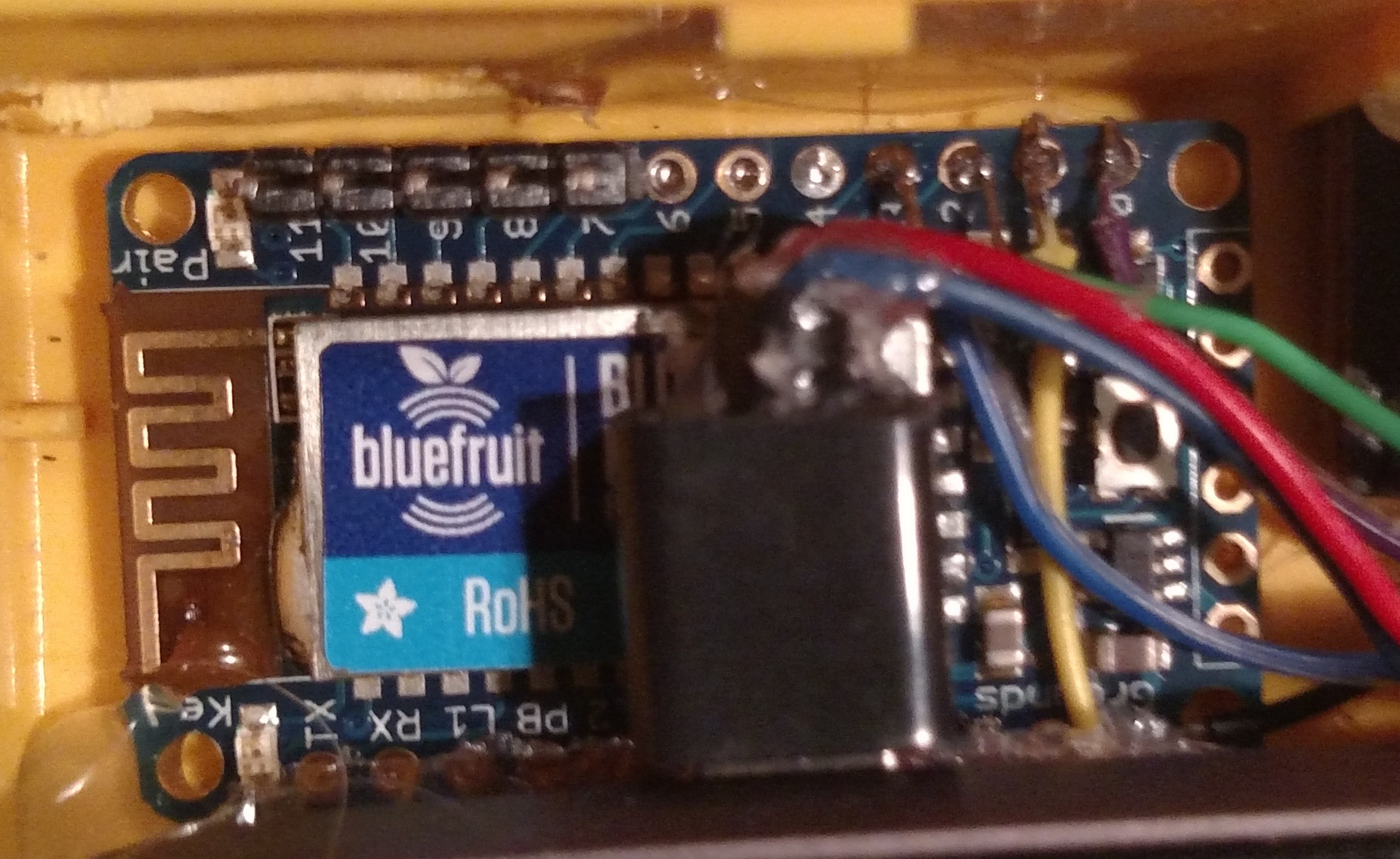-
Buttons
02/27/2015 at 05:30 • 0 commentsHow I was going to actually turn the buttons on the outside into digital inputs, took a bit of thinking. For awhile I had the idea of 3D printed inserts and a brace of sorts with places for buttons. I had also planned on making it one connected structure that would fit around all of the nooks and crannies.
Instead I salvaged the plastic inserts from the cassette guts, since these would be better than any inserts I could create. Also instead of one solid structure I went with a more modular approach, creating a small piece that could be printed in quadruplicate.
![]()
The tactile button sits against that back rail and the insert sits on the front and is lined up with the button.
![]()
And with the help of some cardboard and hot glue, all the buttons sit nicely up against the inserts and function as intended.
-
To bring everyone up to speed...
02/19/2015 at 19:41 • 0 commentsI'm going to give a quick rundown of what my ideas were before I got to this point.
First off my initial idea was to gut the walkman and install a Raspberry Pi with a nice audio DAC. I had bought some parts and it wasn't exactly coming together very smoothly. I was quickly running out of room and my button set up was juvenile to say the least.
![]()
(Yes that is a popsicle stick)
Hypothetically from there I would have used a teensy to emulate a keyboard, and I would have written a small media player on the RPi to display on this tiny composite screen.
![]()
Noticing all of the flaws I decided it would be best to go with an android phone, and I bought a few on the cheap off of ebay for around $15 each. To interface with the android phones I looked around and found the IOIO board, which is one of the coolest boards in my eyes.
![]()
For the senior project class, research was a required part of the curriculum and I annotated the IOIO documentation on Analog I/O and Digital I/O (Yati). The IOIO board would have allowed me to add analog input from the volume pot and I would have been able to add a status LED to shine through where there was one originally on the device. I was also planning to write an android program that issued media commands to the device through a IOIO connected app. These were features I'm willing to put off (for now).
To get things moving more quickly I switched to the Bluefruit EZ-key, which added some more flexibility and a smaller form factor (albeit some weird programming software).
![]()
WM-F45 Upgrade (Sony Walkman)
A modern upgrade for a cassette player. The brains android with the feel and function of a vintage Walkman.
